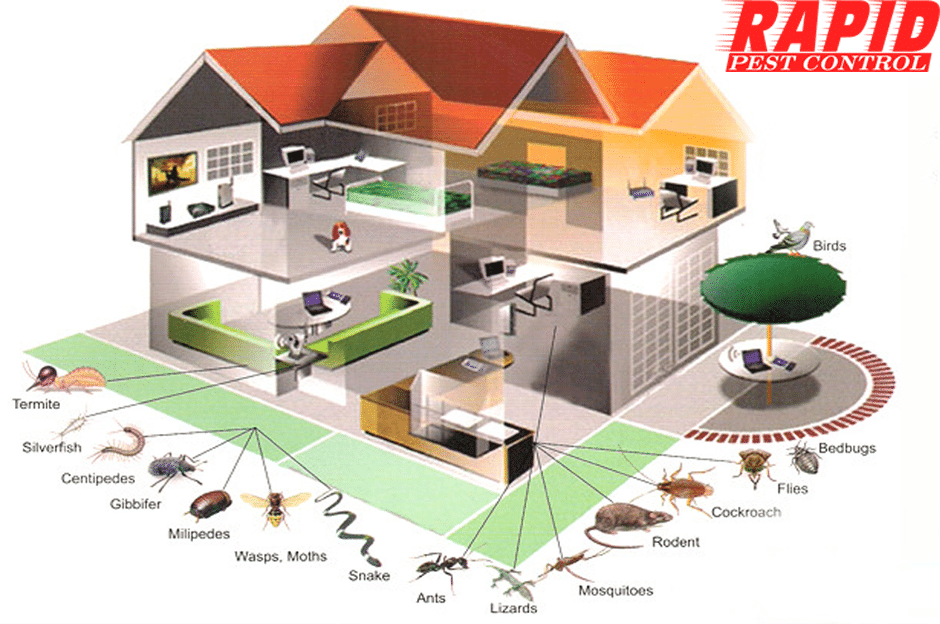Pest control is a critical aspect of upholding a secure and wholesome living space. From irritating ants and pesky cockroaches to sneaky rodents and persistent bed bugs, the struggle against household pests is one that many people face every year. Unfortunately, despite our best efforts, sometimes the odds seem stacked against us. That's why it's so crucial to draw inspiration from real-life pest control success stories. These case studies not only emphasize effective strategies but also foster confidence in the fight against common invaders.
In this article, we will examine various success stories from homeowners and professional pest control experts as well. We will delve into the methods used, the challenges faced, and the results achieved. You will learn how the ultimate guide to keeping your home pest-free throughout the year truly works in practice, along with insightful insights into dealing with season-specific pests, common household pest issues, and disproving myths that frequently lead to failed DIY attempts. By sharing these experiences, we strive to provide you with the knowledge and strategies needed to ensure your home remains a pest-free haven.

Regular Home Infestations and Recommended Solutions
Household infestations can disturb the ease of your residence, but recognizing frequent pests and efficient solutions can assist you maintain a pest-free space. Ant are one of the most common intruders, often seen in cooking areas looking for food. To combat these tiny intruders, it's crucial to keep food stored airtight packages and maintain cleanliness. Utilizing trap traps positioned near their paths can successfully reduce their numbers, while sealing access holes avoids future invasions.
An additional common pest is the bed bug, which can rapidly turn a nightmare. These blood-sucking insects are notorious for their capability to hide in beds and furnishings. To detect an invasion, check for small stain stains or dark spots on bedding. Discover more requires a mix of thermal treatment, expert pest control, and deep washing of bedding and clothing. Regular inspections and preventative measures, like encasing beds, can help keep these pests at bay.
Cockroaches are yet another household pest that pose health risks. They thrive in hot, shadowy locations and can quickly multiply if not managed promptly. Keeping your house tidy and free from food scraps is essential in stopping their infestation. Employ adhesive traps to monitor activity and think about expert extermination services for serious invasions. Additionally, closing cracks and crevices around your house will help deter these tenacious creatures from entering indoors.
Myths and Realities of Do-It-Yourself Pest Control
Many homeowners assume that tackling pest problems on their own time is a straightforward process, frequently fueled by the abundance of DIY pest control products available. This perception creates the myth that a simple store-bought solution can eliminate any pest issue with ease. However, the reality is that pests can be complicated and hard to get rid of, and a surface-level approach may not address the underlying causes of pest problems. Without proper recognition and treatment plans, DIY efforts can often lead to greater problems down the line.
Another common myth is that DIY pest control is always less expensive than employing professionals. While the upfront price may suggest savings, the time, effort, and potential need for repeated treatments can make DIY methods more costly in the end. Moreover, improper application of pest control methods can cause overexposure to chemicals or lead to harmful consequences for animals and the environment. Professionals are trained to effectively handle pest issues with targeted approaches, which can ultimately save homeowners both time and money.
Furthermore, there is a false belief that all pest control methods are safe for home and family. Many DIY products have harsh chemicals that can pose risks to health, especially for children and pets. In contrast, professional pest control services often offer eco-friendly and animal-friendly options, ensuring a safe environment while efficiently managing pest populations. Recognizing these truths can guide homeowners in making informed decisions about pest management strategies.
All-Year Bug Control Methods
Ensuring a bug-free house demands preemptive steps during the 12 months. One effective strategy is to inspect your home frequently for any access points that bugs could exploit. Look for breaks in walls, gaps around windows and doors, and openings around pipes. Closing these gaps with sealant or weather stripping can considerably lower the likelihood of bugs invading your home. Additionally, ensuring that screens on windowsills and doors are in good working order will aid in keeping pests at bay.
Another crucial aspect of bug prevention is sound cleanliness. Ensuring your interior neat and clutter-free makes it hard for insects to find sources of food and nesting sites. Keep edibles in airtight packages, immediately clean up mess, and regularly dispose of the garbage. It's also important to maintain your yard by trimming bushes and keeping the yard cut to minimize hiding places for insects. By cutting down on attractants, you create an atmosphere that is not conducive to undesirable creatures.
In conclusion, think about a holistic strategy to pest control by including natural remedies. This may include growing bug-repelling vegetation, such as marigolds, around your property or utilizing natural oils that repel common bugs. Additionally, routine expert assessments can assist identify potential issues before they escalate. By merging these techniques, you can develop a strong bug prevention strategy that protects your home for the year.
